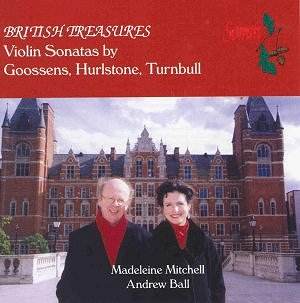Goossens
often doused his melodies in harmonic fog. Here however he
allows the lines to sing in a way akin to the two British master
sonatas of the Great War - the second violin sonatas of Thomas
Dunhill (recorded on Cala) and John Ireland (Chandos, Vienna
Modern Masters and Hyperion). There are also macabre rustic japes
in this music as in the final con brio.
Hurlstone
died of pneumonia in 1906 - one of the lost great hopes of
British music. His music might have basked in the enduring sunshine
of those who die young but the Great War offered eclipsing tragedies
that until the 1970s suffocated the Hurlstone cause. Now however
there are three orchestral works on a Lyrita CD (plus two more
when, if ever, Lyrita rises phoenix-like), a Metier collection
as well as oddments dotted here and there throughout the catalogue.
He is fresh in his Sonata with moments touching on Dvořák
and Brahms. He manages to shrug off Victorian fustian and fixes
his gaze on a pastoral horizon. The explosion at the end has all
the lunging passion of the start of Howell 1917 Piano Quartet.
Turnbull's
sonata, a product of his mid-1920s in Guildford, is a fulsomely
lyrical piece with strong resonances of Ireland and Ravel. It
reminded me also of the turbulent melos of both Howells in England
and the still under-rated Bonnal in France. Of the three sonatas
this is the most ecstatically straight-talking. This recording
should be the spark for a Turnbull revival.
Madeleine
Mitchell and Andrew Ball demonstrate all the required passion
and emotional half-light commanded by these romantic pieces.
Surely
Somm will not stop here. We need next a coupling of the sonatas
by Cyril Rootham, Holbrooke (2nd Romantic and 3rd Orientale)
and Goossens' Second of 1930. For later projects there are the
sonatas by Isaacs, Coke and Dale.
The
Turnbull and Hurlstone are world premiere recordings.
Good
notes by Jeremy Dibble in English only.
Rob
Barnett
